GSD Types

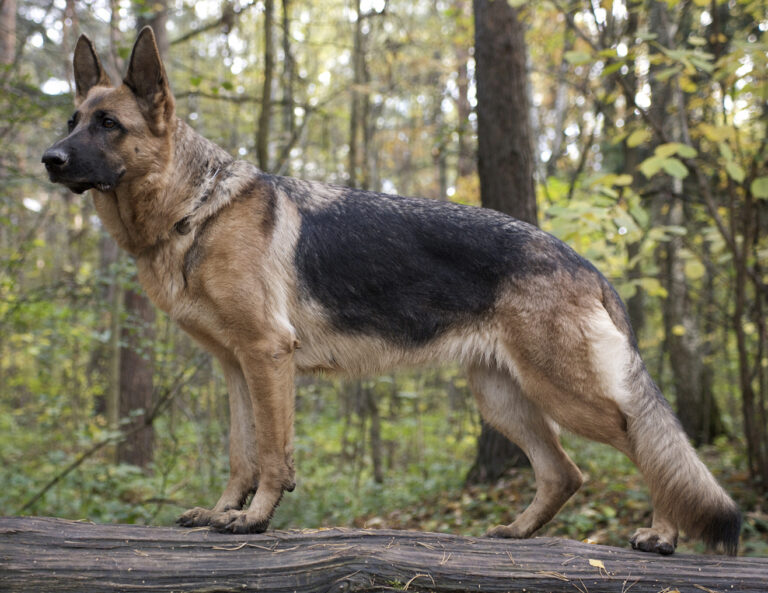
West German Working Line
The West German working-line German Shepherd is a medium-sized, well-proportioned dog with good drive. To some, it is considered one of the closest—in form and function—to the original foundation dogs for the breed. Typically, these lines will be of a smaller height and weight and have a more level back—which is well suited for jobs requiring great agility and endurance. West German working dogs generally come with a short coat and a variety of colors including stable, black and tan, bicolor, and solid black. They excel in sports and working and service jobs.
Although this type of German Shepherd has a strong work ethic, it is also known for its “on/off” switch—meaning it can settle quickly when needed. This ability to transition out of drive quickly makes them fantastic pets for active families.
West German working lines are sometimes confused with the West German show lines—which are bred to excel in the show ring—not on the field. So their form and functions are quite different.
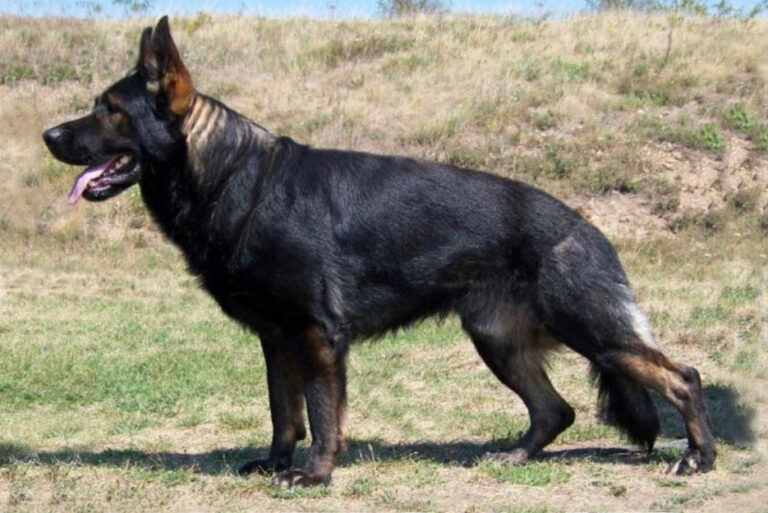
DDR/East German Working Line
Developed after World War II, the East German/DDR working dogs were controlled strictly by the government of East Germany. The establishment of the Deutsche Demokratische Republik meant strict government-controlled pedigree registration and 40 years of closed breeding.
DDR dogs are best known for their correct working structure, large head, and bone—and dark pigment. The bloodlines are also known for being very sound dogs, though their working drives can vary. Older DDR bloodlines are valued for their phenomenal genetics and temperament. They are great for those looking for a sturdy, clear-minded working dog.
Most East German/DDR dogs require plenty of mental and physical stimulation and some do best with more experienced handlers.

Czech Working Line
Originating in Czechoslovakia, the Czech bloodlines were derived from a combination of popular border patrol dogs and Czech military dogs. Some of these Czech dogs have phenomenal working drives and make superb sports and working dogs.
The development and maintenance of this line of German Shepherds traced back to one kennel owned by Czechoslovakian Army’s border patrol—whose sole purpose was to breed and train dogs for military border patrol work.
Like the working lines of East Germany, this type of German Shepherd is agile with a powerful build and dark pigment. They are typically varying shades of sable or solid black in color. With a strong work structure and high work drive, this line will excel in obedience, agility, and protection sports. They can be intense and need plenty of mental and physical stimulation.

West German Show Line
The West German show-line dogs are the most well-known German Shepherd type abroad. They are bred to conform to the SV (Verein für Deutsche Schäferhunde) standard which requires all dogs to pass health clearances for hips and elbows plus attain a working title—prior to being certified for breeding. These GSDs are very typed in appearance and are traditionally black and red saddles. More recently, the appearance of a strikingly beautiful, all-black muzzle and mantle has been introduced.
Not only are these dogs pretty, but they are unmatched in the art of gaiting and make outstanding protectors and family pets. And just like other lines of GSDs, these show dogs need lots of exercise, training, and socialization. The long-coat variety of the West German show dog has become increasingly popular and many now compete in their own classes at the highest levels—worldwide
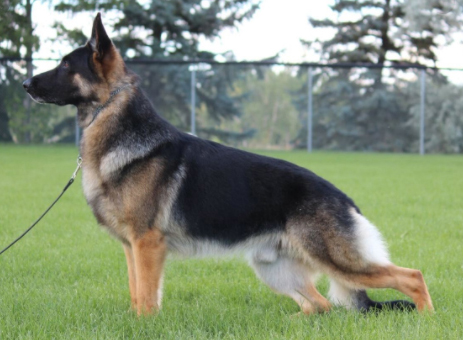
American and Canadian Show Line
The American and Canadian show-line German Shepherds are infamous for their flying trot or side gait. For decades, these popular North American dogs have dominated the national kennel clubs.
North American show lines are bred for ring competition and are not required to attain a working title to compete. Many owners do have successful careers in agility and obedience work with these dogs.
American show lines are typically large dogs, and have a narrower head and increased rear angulation. The angulation is what gives them the ability to attain astonishing reach while gaiting.
If well-bred, these lines reveal a laid-back and intelligent character. They can also be less physically demanding—making them great companions and family pets.
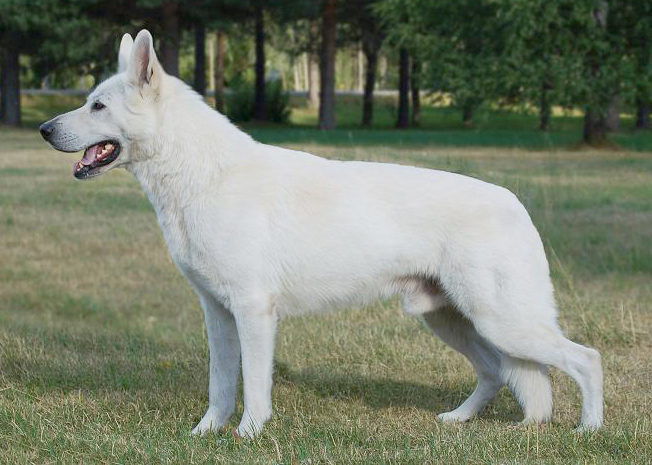
White German Shepherds
White German Shepherds can be registered with the American White Shepherd Association (AWSA), the United Kennel Club (UKC), and the American Kennel Club (AKC). White dogs cannot compete in the ring under AKC due to coloring, but they can compete with the White German Shepherd Club of America (WGSDCA), AWSA, and UKC. The Fédération Cynologique Internationale (FCI) recognized the white shepherd as a Berger Blanc Swiss in 2002, and the Swiss were the first to recognize the White German Shepherd as a separate breed—which is why Switzerland was credited as the country of origin for the breed.
Since the breed’s existence, there have always been all-white puppies within some lines. The recessive gene appears to have been a part of the original gene structure. As with any shepherd, White Shepherds can excel in obedience and agility and make excellent companions and family dogs and some have competed in Schutzhund.
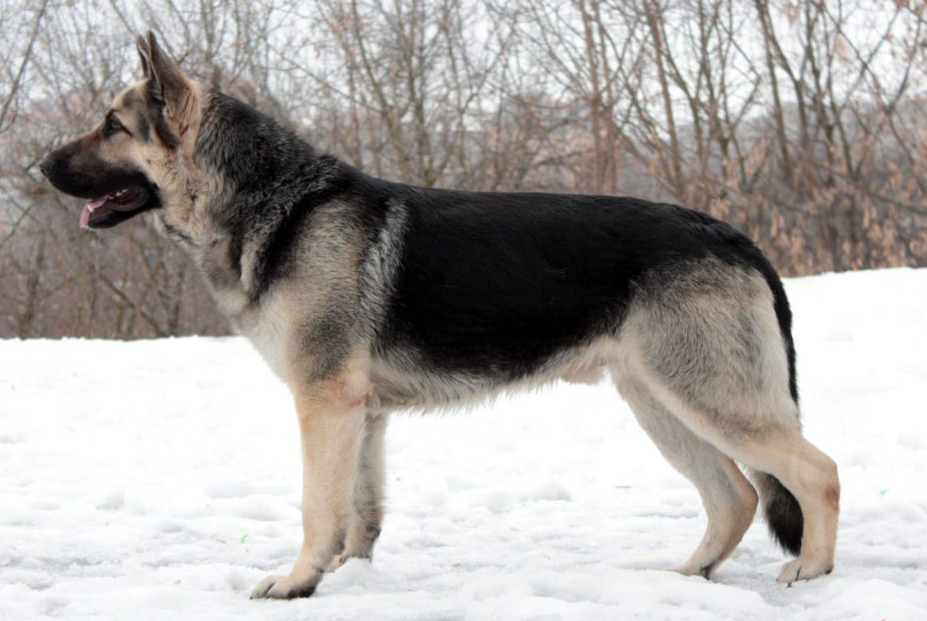
Multi-Line German Shepherds
There are many wonderful combinations of lines of German Shepherd Dogs. Breeders have crossed West German and East German/DDR working lines to produce dogs with phenomenal drives and temperaments. Many homes are graced with American show-line/working-line crosses. These dogs make awesome companion animals and therapy dogs. As with any German Shepherd combination, owners need to be aware that all German Shepherds—regardless of lineage—need early, consistent training and socialization to become well-rounded, sound, adult dogs.
German Shepherds are working dogs by design and thrive in environments with rules, boundaries, and limitations—and LOTS of exercises. Correctly guided, few breeds possess the flexibility, adaptability, and charm of a well-bred German Shepherd.
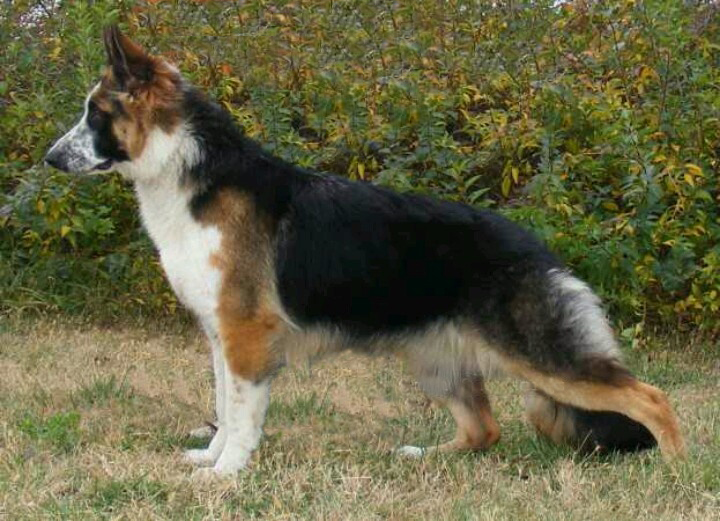
Panda German Shepherd
The Panda German Shepherd is a piebald-colored GSD. It is simply a uniquely-colored German Shepherd line that produces dogs with no more than 35 percent of their bodies white—with the remaining coloring being black and tan. There is no White German Shepherd in the Panda German Shepherd lineage.
The first known Panda German Shepherd was born in 2000 to two purebred GSDs and the only difference between a Panda German Shepherd and a traditional German Shepherd is coat color.
Pandas do not suffer from any health issues not already predisposed to German Shepherds. There are no incidences of vision or hearing defects related to their unique coloring.
These colorful shepherds are intelligent and easily trained and make awesome family pets and companions. They can be registered with the AKC as purebred German Shepherd Dogs if DNA tested.



